HI_SALENITY
Well-Known Member
Anyone want to walk me through the temperature calibration for these controllers ? I can't find my instructions. 

Just a followup.. I got the HOA switches wired in and everything is working great. The center "Off" position kills the solenoid valve power, the top "Auto" position allows the PID to control the solenoid valve, and the bottom "Fire" position sends power directly to the solenoid valve to open (ignoring the PID).
Here's the control panel:
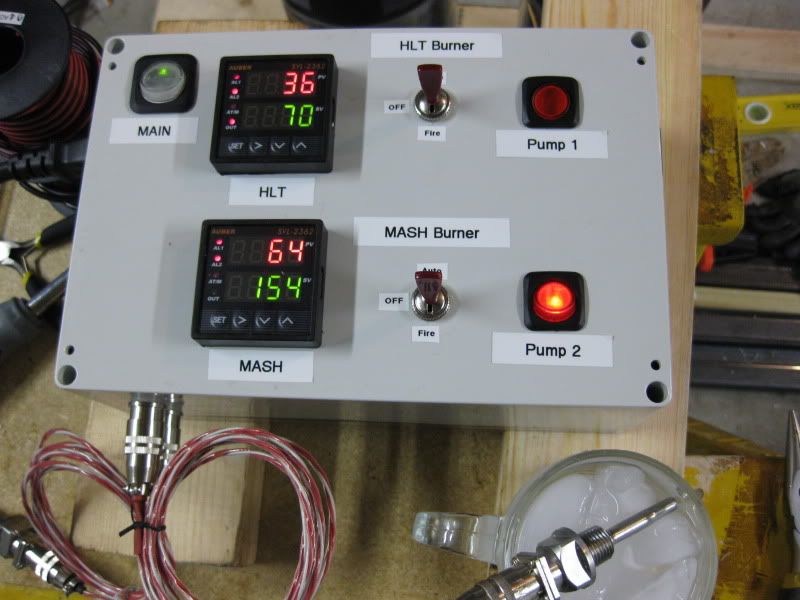
Testing with the RTD tees (Lonnie Mac style):
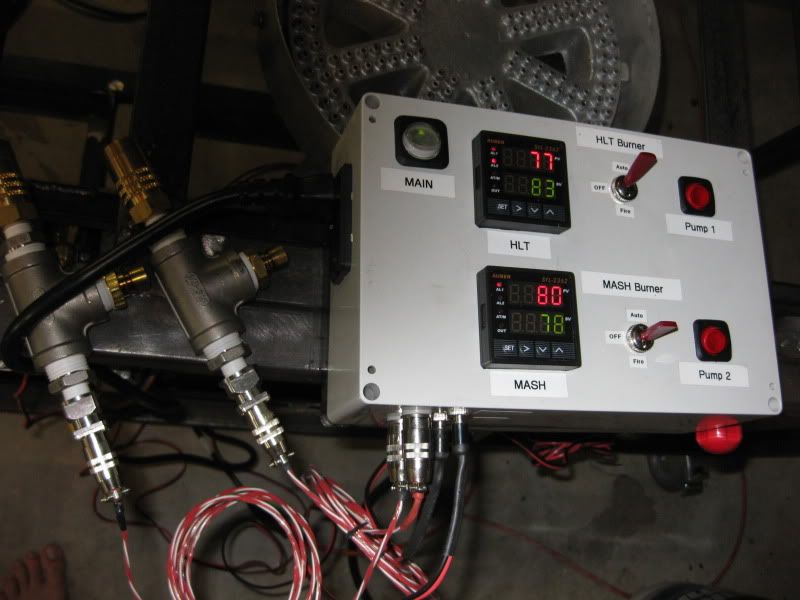
The RTD inputs and valve power outputs (24V):
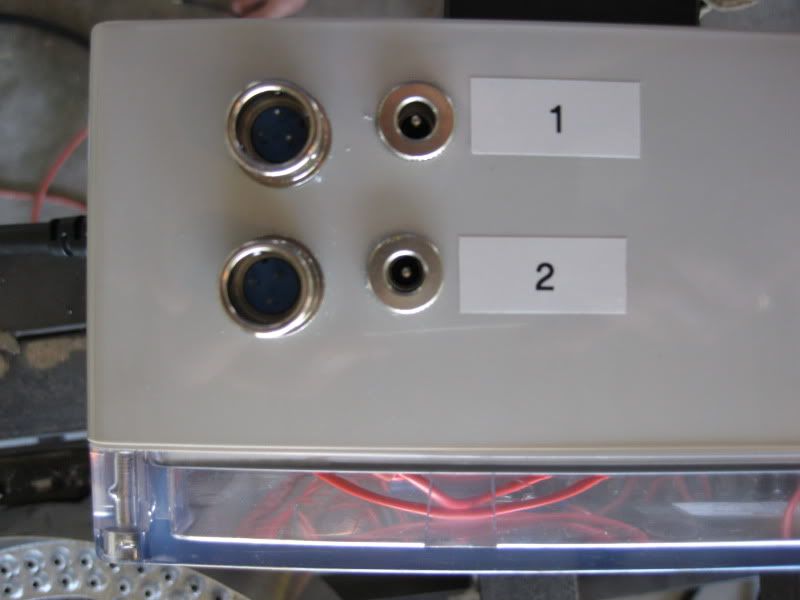
Power in:
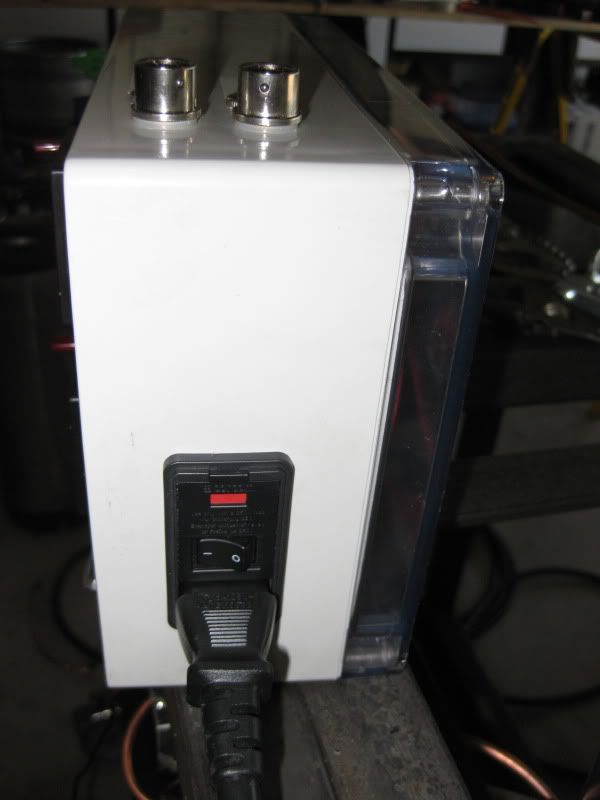
Pump power out without the covers (I'm planning to swap these out with the female version anyway, for safety's sake):
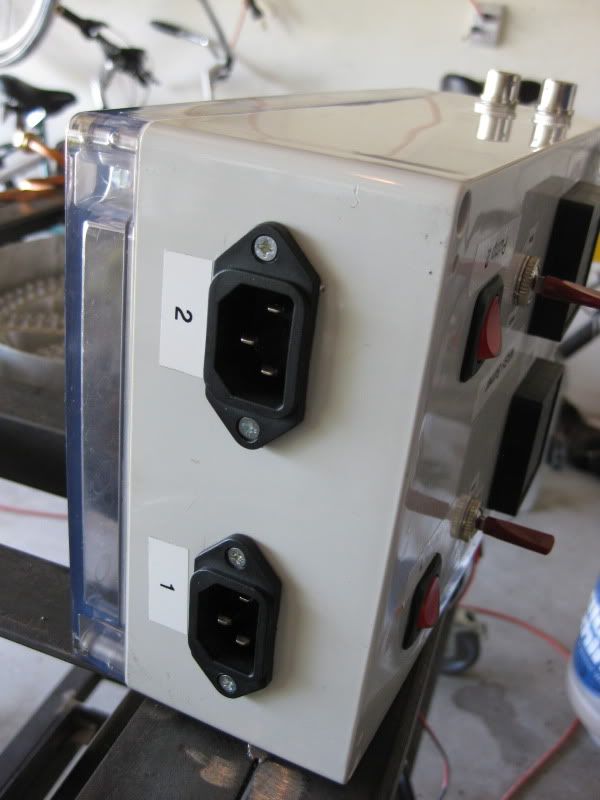
The control panel wiring. The box I used has a clear back, so this is looking in the back of it:
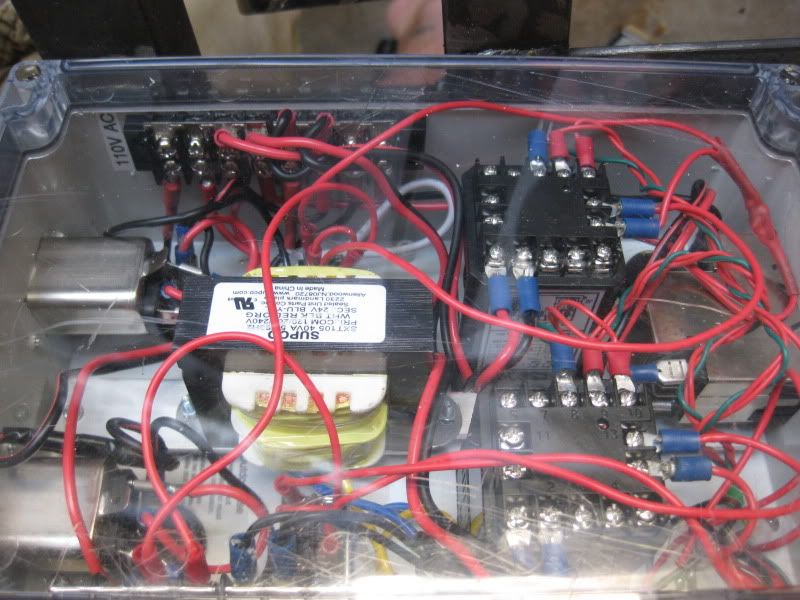
From left to right:
- 2 x output power modules 110V (pumps)
- 110V Terminating block (top)
- 110V to 24V Transformer, 40VA (middle)
- 24V Terminating block (bottom)
- 2 x SYL-2362 PIDs from Auber (in on/off mode)
- Input power module 110V (fused).
- The HOA switches are on either side of the transformer.
--
Josh
I like the power modules. Where did you get those from? I have a similar build. Nice job!
Anyone want to walk me through the temperature calibration for these controllers ? I can't find my instructions.
Hmm... they should be calibrated already. Are you sure your RTD connections are ok?
The instruction manual is here:
http://auberins.com/images/Manual/SYL-2362%20instruction%201.6.pdf
--
Josh
Hmm... they should be calibrated already. Are you sure your RTD connections are ok?
The instruction manual is here:
http://auberins.com/images/Manual/SYL-2362%20instruction%201.6.pdf
--
Josh
How do you have yours programmed? Do you do the Autotune and let the valves cycle on and off to keep it at the set value (SV) or do you have the control mode set to on/off control (At = 0) and let the temp drop below a certain number of degrees (SV-Hy setting) and then kick on the valve and shut off when it reaches a certain temp above the set value (SV+Hy)? I have the same Honeywell valves and worry about them getting killed by continuously cycling on and off in the Auto mode (At=3).
I'm sorry I don't know what the "At" parameter is that you mentioned.
I do have OutY set to 4 which uses J2 as On/off control relay contactor output. I have the Hysteresis set for 2 degrees.
The auto-tune feature is interesting, now that I look at it, but I can see your concern with wearing out the honeywells in PID mode (Outy=2). I'd be curious to see what PID parameter values (P, i, d, SouF, ot) the auto-tune comes up with for this application (mashing, for example). If it seemed like a tolerable pulse frequency for the honeywells, I might switch to that method actually.
--
Josh
Anyone want to walk me through the temperature calibration for these controllers ? I can't find my instructions.
There is no calibration per se. You can make adjustmenys to the PID parameters. Is that what you mean?
Thanks Kladue. So one other question, Should I get a PID with an SSR or a relay? I assume a relay since I do not need rapid/constant switching. IE. electric rims tube.
Do you have a diagram for this setup?
Sawdust,
I was looking at this post where you drew a schematic for another member:
https://www.homebrewtalk.com/f51/wiring-auber-pids-brutus-build-123326
It looks like just the solenoid valve is run by the PID. Could I run the output of terminal 5 to a distribution block and from there run one line to the March pump and the other to a 24v transformer? This way (I assume) you can kick on the pump and the burner at the same time. Or is it recommended to run the pump continuously?
Awesome, so do you continually run your pump?
Sawdust, why did you go with the RIMS tube and not a direct fired system? Just wondering what the advantages of one method vs the other is. I originally was going with a RIMS tube but then decided to go down this path with the automated burners. I'm sure I'll get this thing running then want to switch again.
So, do you need a Honeywell ignition unit, i.e., P/N S8610U to make the VR8200 work or is a PID all that's necessary?
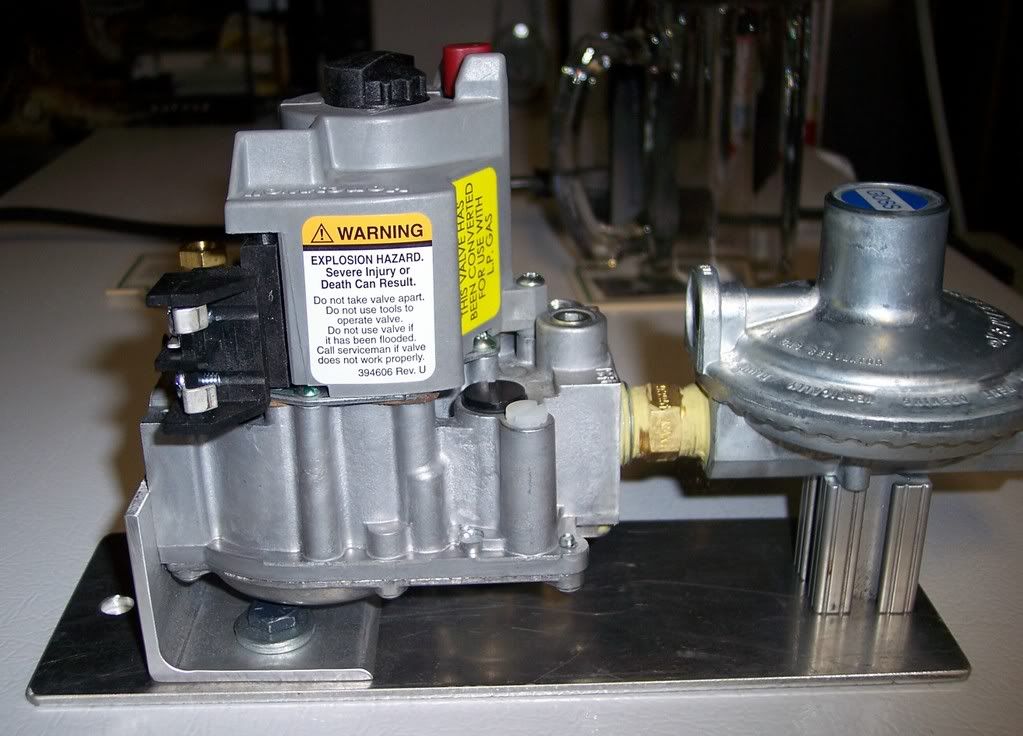
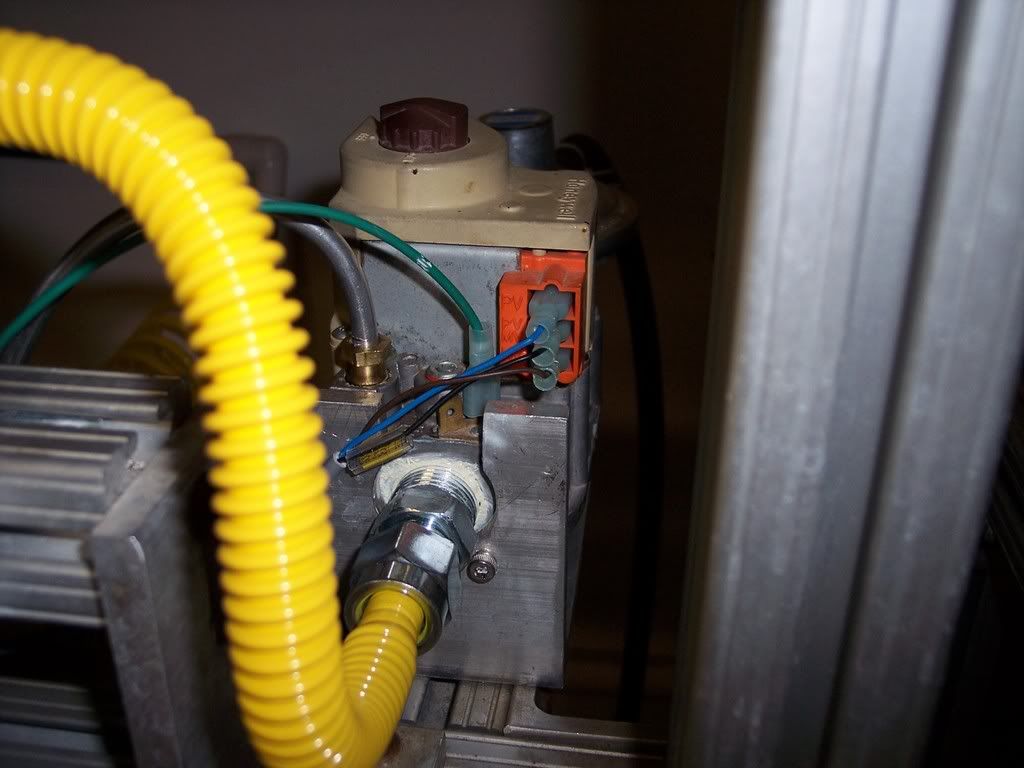

Just wanted to confirm this is the correct way to wire the valve??Ok I have a problem. The gas valve will not open. the pilot light stays lit in the on position and i have 24v to the gas valve but it wont open?
so we are clear it is the same Honeywell 8200 thermostat
The "TR" terminal goes to terminal 14 (24v+) and terminal 13 goes to the positive side of the transformer
The "TH" terminal goes to the negative side of the transformer
I only have 2 wires to the 2 terminals on the valve right ?
Guys, this thread has been very helpful and I am at the point of where HI SALENITY was when he couln't get the gas valves to open. Here's what I understand:
The gas valve will click when I switch the HOA to H (bypassing the PID), but no gas comes out. That's because I have an adjustable 0-30 psi regulator and I need to be at or below 0.5 psi coming. As kladue pointed out, the valves shut above 0.5 psi to prevent accidents.
As for your regulator, the valves you are using do require 11" W.C. of pressure to properly operate. So your 0-30 adj reg will work fine for the BK burner, however if you want the MT & HLT to be fired off of Honeywell valves you will need another regulator(11" W.C.) plumed downstream to lower the pressure for them(Honeywell Pilot Valves).
Can I dial my regulator back (using a gauge that I would have to add) to get it under 0.5 psi? My reason for doing that is that I am using Lonnie Mac's gas beam approach (and not black pipe like Jlandin) and once I am done with the mash in and sparge, I just need to boil and I can turn up the boil pressure and forget about the other burners.
Here is a link to Brewers hardware they sell a regulator and LP orifice that you need to run your burners.
The orifice you are talking about drilling out to 3/32....the is the brass fitting with the small hole that screws into the end of the BG14, right? (I know this sounds stupid but I want to be sure and not have to wait for parts I screwed up.)
See above link
You guys spoke of a LP conversion kit for the pilot. I didn't get a conversion kit that I could find...it it necessary to have one or will I have such a small flame that the thermocouple won't work?
Yes it is necessary to have the proper Honeywell Valve conversion kit to switch from LNG to LP gas. Here is a link to www.pexsupply.com Their valves come with the conversion kit, at least when I ordered mine they did
That should cover your questions, let us know if you still are having troubles.
Cheers

Enter your email address to join: